| If it isn't a church then it must be a convent. We
couldn't actually go in the convent, but we could see the attached garden.
Small but well looked after. | 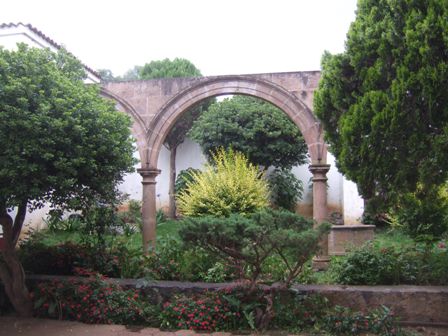 |
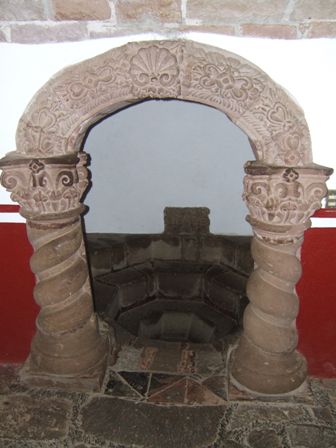 |
Tucked away in an odd courtyard we found this bathhouse dating from the 15th
century. Yes they had baths even then.. |
| This odd wall is around the edge of the old El
Sagrario church. It was built in 1693. On the other side of the road is a
Montessori school. | 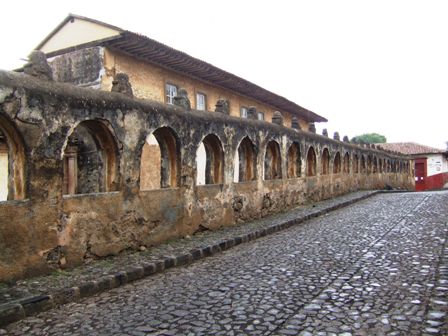 |
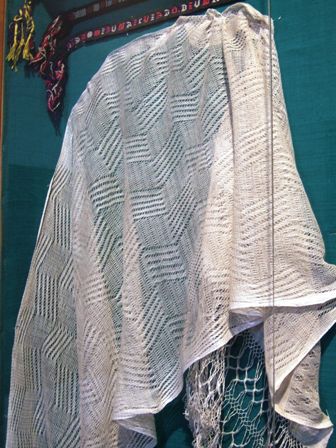 |
Next we visited the Museo de Artes Populares which is housed in the old
Colegio of St Nicholas which was founded in 1540 by Bishop Quiroga. This
is a lace shawl produced by indigenous lacemakers and the guide reckoned
that the style pre-dated the Spaniards. |
| Many of the indigenous groups in the local towns
developed their own individual style, some of which is quite ornate. This is
a wooden salver decorated in a traditional style with pigments produced from
natural sources such as plants, rocks and the cochineal beetle. | 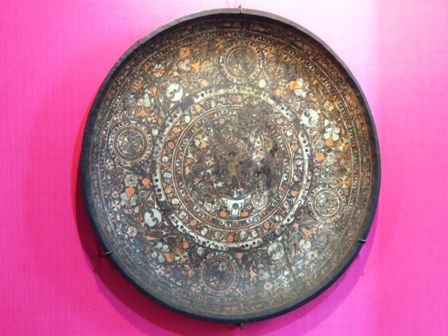 |
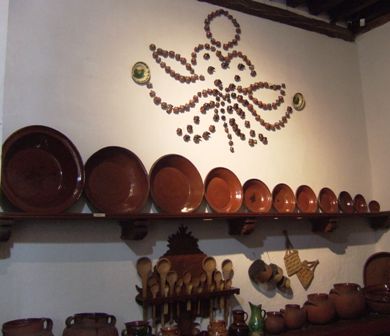 |
There is a large display of kitchenware. The wall design is composed of
miniature jugs. |
| This is a display of kitchen utensils probably for
marking dishes. | 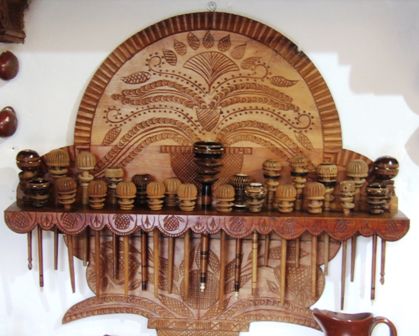 |
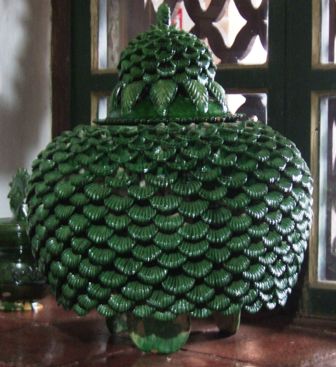 |
This is another local style based on the form of the pineapple. I don't know
what the function of this piece is but it was a challenge to keep things
cool and evaporation causes cooling so having a large surface might help
with cooling. What ever it is it is a very complex piece of pottery. |
| The Americans don't drink tea, but the Mexicans have
apparently used infusions for a long time. This is one of many 'teapots' on
display. | 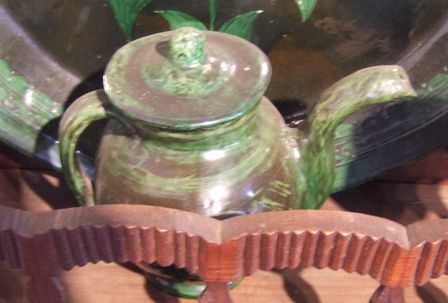 |
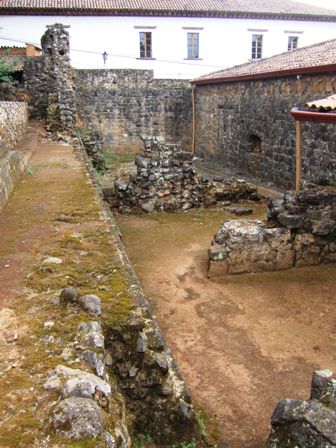 |
The museum had been built on the remains of pre-Hispanic buildings, and out
the back are parts of older walls while to the left are some steps of an
older step pyramid, some stones of which show symbolic carvings. |
| Another display is of excellent small wax models of
people engaged in various social pastimes of a later period. | 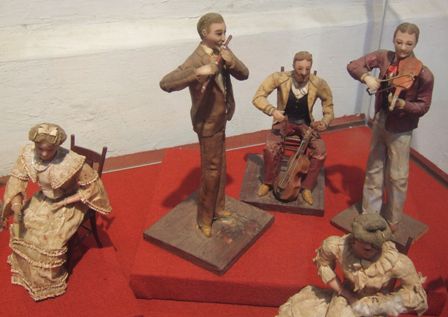 |
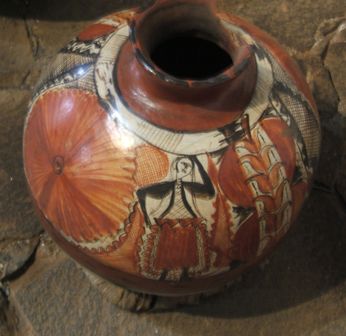 |
But the huge array of pots with amazing designs on was most impressive. |
| Again, each is in a specific style from a particular
village around the lake. | 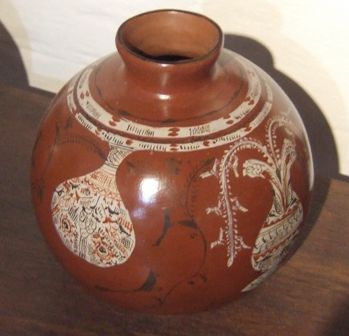 |
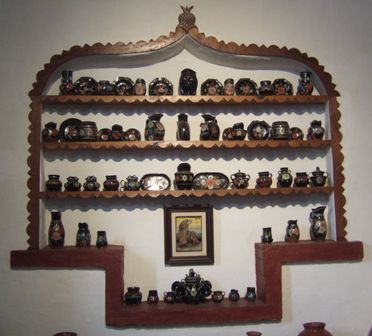 |
The pots were of all sizes from the huge ones above to the collection of
miniatures displayed here. |
| In the centre of the hall is a table with this 12
place collection decorated with another local style from the village of
Capula. The design is made up from dots, a style that reminded us of an
Aboriginal art style from Australia. Other smaller sets were around the
hall. | 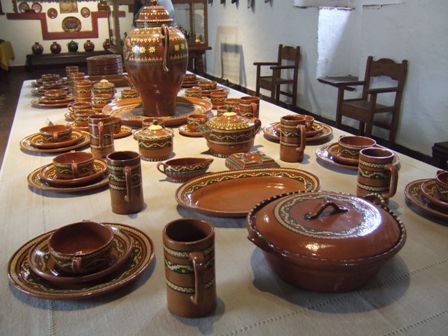 |
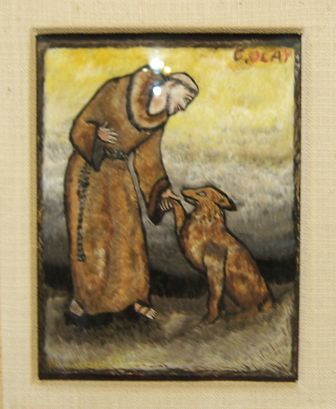 |
This is a religious building and so there are some religious artefacts and
paintings. Most are by unknown artists. The striking thing about this
particular picture is that it is made entirely from feathers. |
| As with many of these buildings, the rooms are
arranged around a central courtyard, in this case planted with bushes and
plants from the region. | 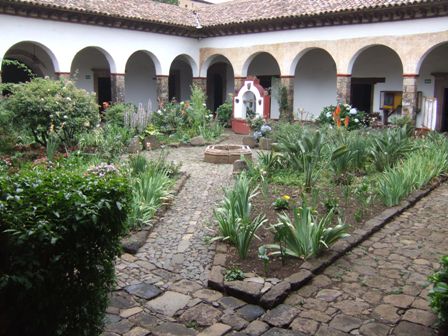 |
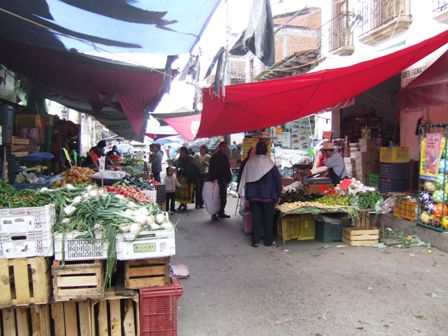 |
We wandered back through the street market before catching a combi bus back
to the campsite. |
|